Abstract
The dissociation constants (KD values) and relative efficacies of seven acetamide analogues of oxotremorine, including two enantiomeric pairs, at muscarinic receptors in the guinea-pig isolated ileum were determined. The method used involved analysis of dose-response data before and after fractional inactivation of receptors with propylbenzilylcholine mustard. All of the compounds studied had lower affinities than oxotremorine, but some had substantially higher relative efficacies. Replacement of the pyrrolidine ring of N-methyl-N-(4- pyrrolidino -2- butynyl )acetamide(I), the parent compound in the series, by a dimethylamino or a trimethylammonium group decreased the affinity 32 and 4.5 fold, respectively, whereas the relative efficacy increased 5.7-8.3 times. There was no correlation between relative efficacies and affinities of the compounds. The structural requirements for high affinity and high efficacy appeared to be quite different.
Full text
PDF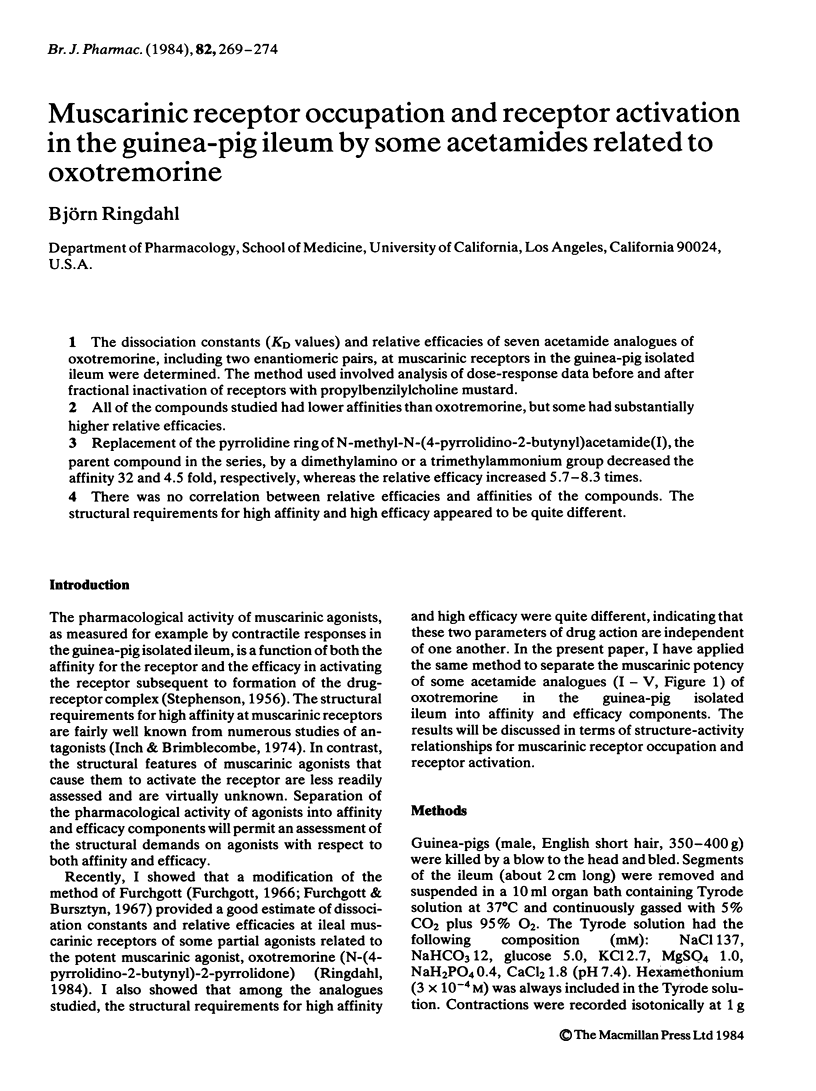
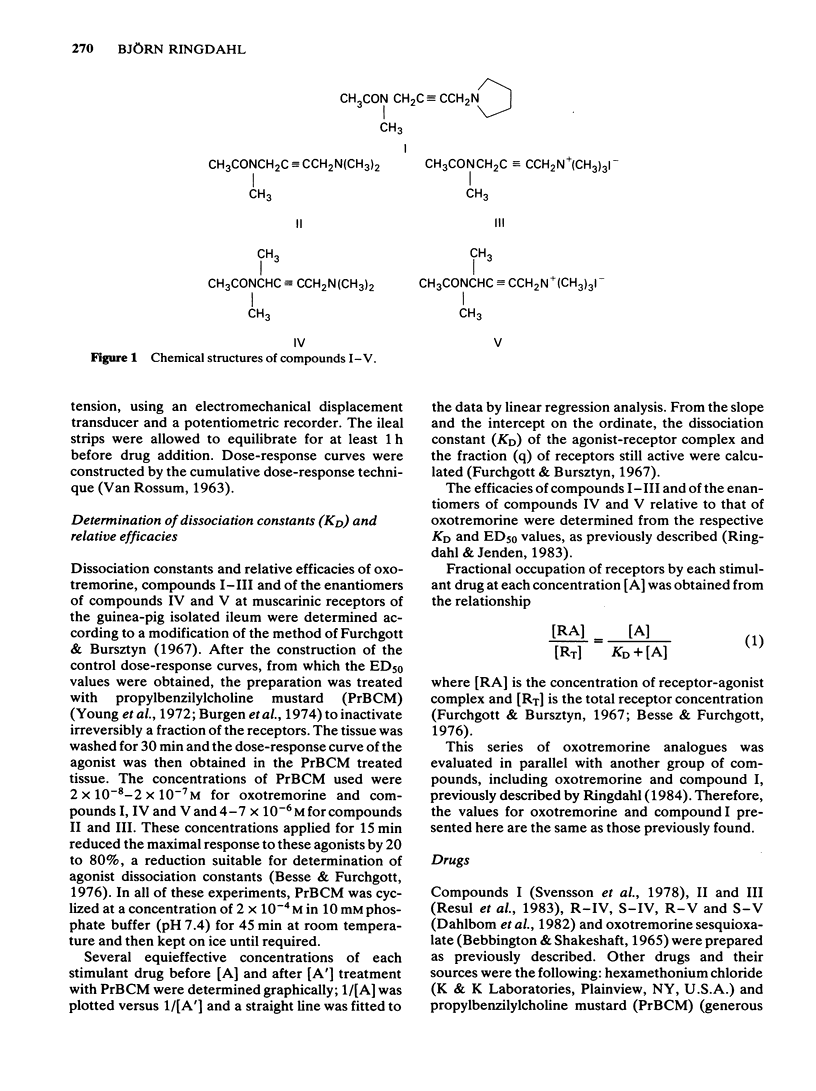

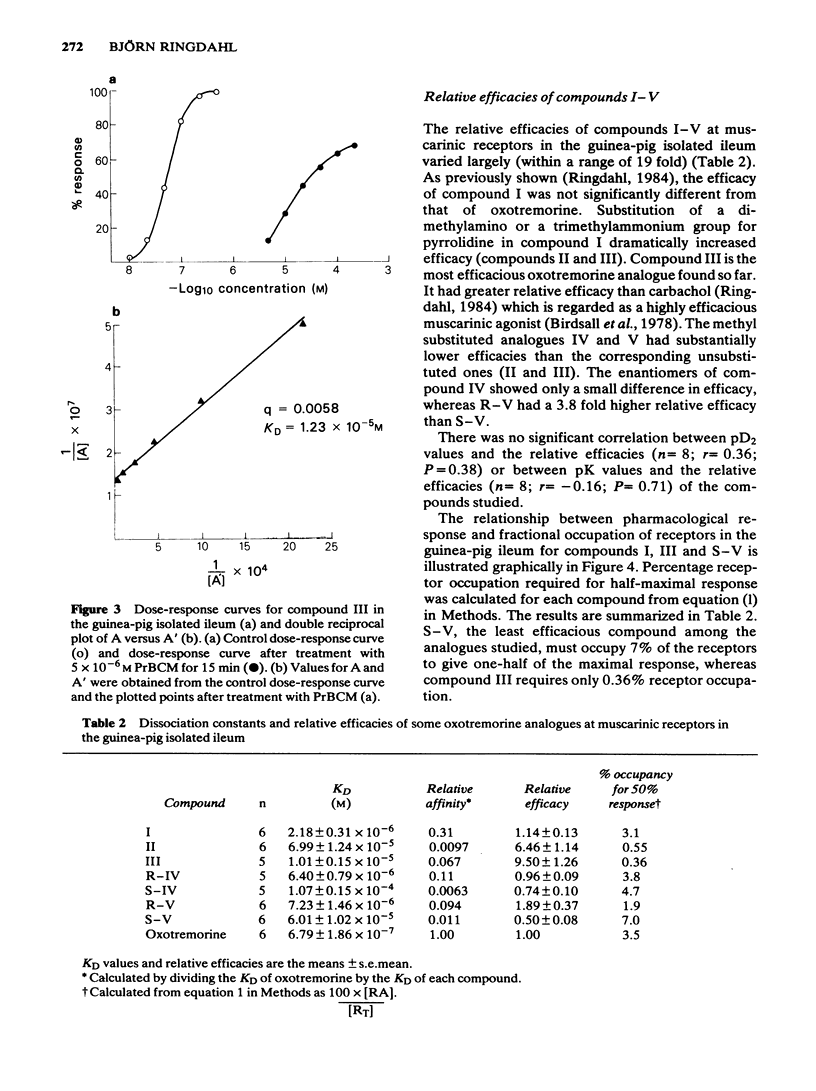
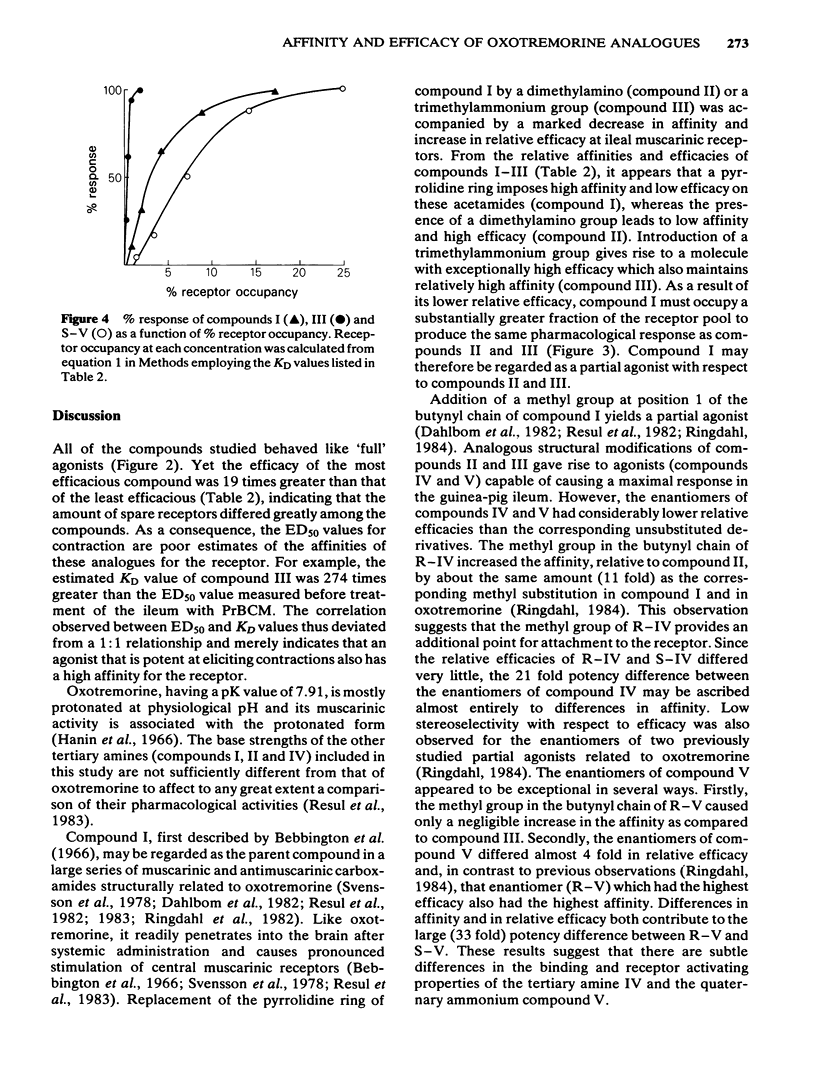
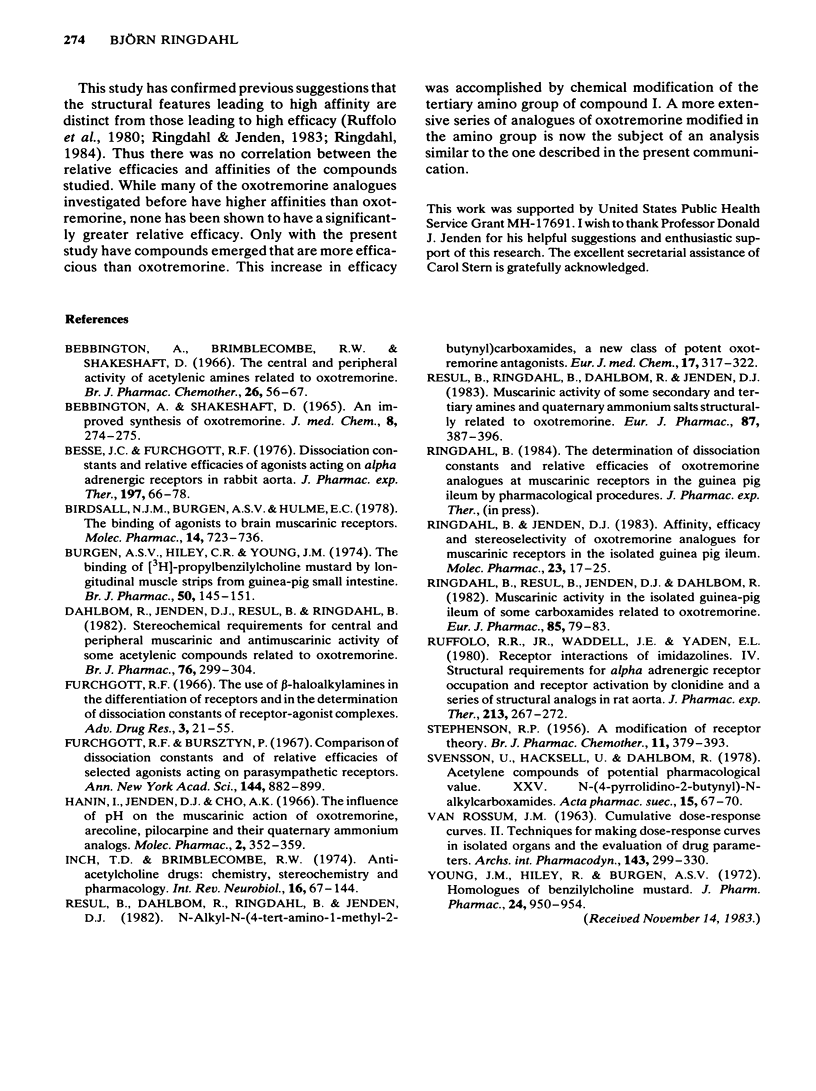
Selected References
These references are in PubMed. This may not be the complete list of references from this article.
- BEBBINGTON A., SHAKESHAFT D. AN IMPROVED SYNTHESIS OF OXOTREMORINE. J Med Chem. 1965 Mar;8:274–275. doi: 10.1021/jm00326a037. [DOI] [PubMed] [Google Scholar]
- Bebbington A., Brimblecombe R. W., Shakeshaft D. The central and peripheral activity of acetylenic amines related to oxotremorine. Br J Pharmacol Chemother. 1966 Jan;26(1):56–67. doi: 10.1111/j.1476-5381.1966.tb01811.x. [DOI] [PMC free article] [PubMed] [Google Scholar]
- Besse J. C., Furchgott R. F. Dissociation constants and relative efficacies of agonists acting on alpha adrenergic receptors in rabbit aorta. J Pharmacol Exp Ther. 1976 Apr;197(1):66–78. [PubMed] [Google Scholar]
- Birdsall N. J., Burgen A. S., Hulme E. C. The binding of agonists to brain muscarinic receptors. Mol Pharmacol. 1978 Sep;14(5):723–736. [PubMed] [Google Scholar]
- Burgen A. S., Hiley C. R., Young J. M. The binding of (3H)-propylbenzilycholine mustard by longitudinal muscle strips from guinea-pig small intestine. Br J Pharmacol. 1974 Jan;50(1):145–151. doi: 10.1111/j.1476-5381.1974.tb09602.x. [DOI] [PMC free article] [PubMed] [Google Scholar]
- Dahlbom R., Jenden D. J., Resul B., Ringdahl B. Stereochemical requirements for central and peripheral muscarinic and antimuscarinic activity of some acetylenic compounds related to oxotremorine. Br J Pharmacol. 1982 Jun;76(2):299–304. doi: 10.1111/j.1476-5381.1982.tb09220.x. [DOI] [PMC free article] [PubMed] [Google Scholar]
- Hanin I., Jenden D. J., Cho A. K. The influence of pH on the muscarinic action of oxotremorine, arecoline, pilocarpine, and their quaternary ammonium analogs. Mol Pharmacol. 1966 Jul;2(4):352–359. [PubMed] [Google Scholar]
- Inch T. D., Brimblecombe R. W. Antiacetylcholine drugs: chemistry, stereochemistry, and pharmacology. Int Rev Neurobiol. 1974;16(0):67–144. doi: 10.1016/s0074-7742(08)60195-6. [DOI] [PubMed] [Google Scholar]
- Resul B., Ringdahl B., Dahlbom R., Jenden D. J. Muscarinic activity of some secondary and tertiary amines and quaternary ammonium salts structurally related to oxotremorine. Eur J Pharmacol. 1983 Mar 4;87(4):387–396. doi: 10.1016/0014-2999(83)90077-8. [DOI] [PubMed] [Google Scholar]
- Ringdahl B., Jenden D. J. Affinity, efficacy, and stereoselectivity of oxotremorine analogues for muscarinic receptors in the isolated guinea pig ileum. Mol Pharmacol. 1983 Jan;23(1):17–25. [PubMed] [Google Scholar]
- Ringdahl B., Resul B., Jenden D. J., Dahlbom R. Muscarinic activity in the isolated guinea pig ileum of some carboxamides related to oxotremorine. Eur J Pharmacol. 1982 Nov 5;85(1):79–83. doi: 10.1016/0014-2999(82)90426-5. [DOI] [PubMed] [Google Scholar]
- Ruffolo R. R., Jr, Waddell J. E., Yaden E. L. Receptor interactions of imidazolines. IV. Structural requirements for alpha adrenergic receptor occupation and receptor activation by clonidine and a series of structural analogs in rat aorta. J Pharmacol Exp Ther. 1980 May;213(2):267–272. [PubMed] [Google Scholar]
- STEPHENSON R. P. A modification of receptor theory. Br J Pharmacol Chemother. 1956 Dec;11(4):379–393. doi: 10.1111/j.1476-5381.1956.tb00006.x. [DOI] [PMC free article] [PubMed] [Google Scholar]
- Svensson U., Hacksell U., Dahlbom R. Acetylene compounds of potential pharmacological value. XXV. N-(4-pyrrolidino-2-butynyl)-N-alkylcarboxamides. Acta Pharm Suec. 1978;15(1):67–70. [PubMed] [Google Scholar]
- VAN ROSSUM J. M. Cumulative dose-response curves. II. Technique for the making of dose-response curves in isolated organs and the evaluation of drug parameters. Arch Int Pharmacodyn Ther. 1963;143:299–330. [PubMed] [Google Scholar]
- Young J. M., Hiley R., Burgen A. S. Homologues of benzilylcholine mustard. J Pharm Pharmacol. 1972 Dec;24(12):950–954. doi: 10.1111/j.2042-7158.1972.tb08925.x. [DOI] [PubMed] [Google Scholar]


